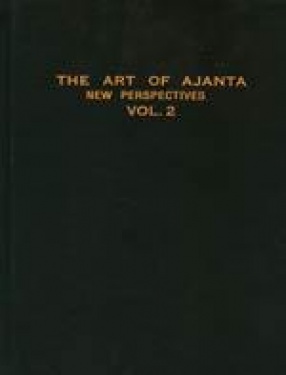
Showing all 13 books










These essays are a culmination of zealous research, field work and post graduate teaching conducted zestfully for years by now retired Professor of art history, Ratan Parimoo, who is also a distinguished practicing painter. Having studied Stella Kramrisch and keenly analysed Ananda Coomaraswamy, Parimoo has also kept abreast with the current trends in international Art History. Kramrisch's thinking was formulated under the influence of the Vienna school of Art ...

It is a work which will be of interest to the layman and scholar alike since it surveys the process by which Buddhism travelled from the land of its birth to Central Asia, China, Korea and Japan. It tells the fascinating story of numerous Buddhist scholars, who travelled thousands of miles across the continent, sometimes over completely uncharted terrain, to carry Buddhist teachings to the farthest corners of Asia. The work describes the interaction of Buddhism ...


This book provides a complete survey of the Hoysala temples that are still in existence. These sophisticated Hindu temples, always made of potstone, were built between 1100 and 1300 AD in the southern half of Karnataka, southern India. Today three of them, found in Belur, Halebid and Somanathapur, are very well-known. They are, however, only the tip of the iceberg, for more than a hundred Hoysala temples, large and small, have survived the ravages of time. In ...

A study of the historical circumstances and religious thoughts which moulded the artistic forms of Ajanta in relation to contemporaneous developments.


The objective of the seminar--comparative aesthetics and criticism of the contemporary arts--was to bring together for the first time in a common forum the art historians, art critics, literary, film and theatre critics; including some of the intellectually minded practitioners of these arts; Sanskrit scholars of aesthetics, philosophers and sociologists, who have been observing, documenting and assessing the contemporary mnanifestations in the various art ...

No other region in India is so rich in Buddhist monuments as Andhra Pradesh is. More than hundred Buddhist establishments have so far come to light. The Buddhist Architecture in Andhra is an attempt to bring out the salient architectural features of the Buddhist monuments in the area. For about one thousand years (circa 300 B.C. - A.D. 600) Buddhism exerted profound influence on the socio-cultural life of the Andhras, especially during the Satavahana-Ikshvaku ...

Eastern India, comprising the modern states of Bengal, Bihar and Orissa, shares a broad geographical features. The region witnessed emergence of man and his culture as early as in the middle pleistocene period, and has ever since made progressive changes (as evidenced by the discovery of different elements of stone age culture) over time and space, finally led to the development of many important early urban centres. Despite the tremendous amount of ...

The present work describes one of the largest finds of Mediaeval coins of India discovered in recent times. The trove unearthed at Chandir Jhar village in the Alipurduar district of West Bengal contains 767 silver coins belonging to the Suri Sultans of Delhi, Bengal Sultans, Bahmani Sultans, Mughal Emperor Akbar, kings of Tripura and Koch Behar, covering a period of nearly 240 years. The authors have critically analysed the hoard in the context of history and ...

The present work describes medieval coins of India discovered in recent times, the trove unearthed of Chandir Jhar village in the Alipurdhar district of West Bengal. It contains 767 silver coins belonging to Suri Sultan of Delhi, Bengal Sultans, Bahmini Sultans, Mughal Emperor Akbar, Kings of Tripura and Koch Behar covering a period of 240 years. The authors have critically analysed the hoard in the context of history and numismatics and carefully examined the ...

Islamic sacred architecture has four major traditions, the Arab, the Iranian, the Turkish and the Indian. Historians of these traditions have for several decades been studying them with some thoroughness, so that it is now possible to survey them all panoramically as a single cultural phenomenon within the ambit of Islamic civilization. However, the first three traditions appear to be separated from the last by what may be called the Hindu Kush barrier. And such ...

The most neglected aspect of Indian archaeology is the archaeology of the historical period. Although some historical sites were excavated before 1947, they were neglected in the post-independence period as the attention was concentrated more on protohistoric settlements. When historical levels were encountered in excavations, they had to be removed because the main objective was to reach the protohistoric strata. The present study, however, brings into sharp ...
